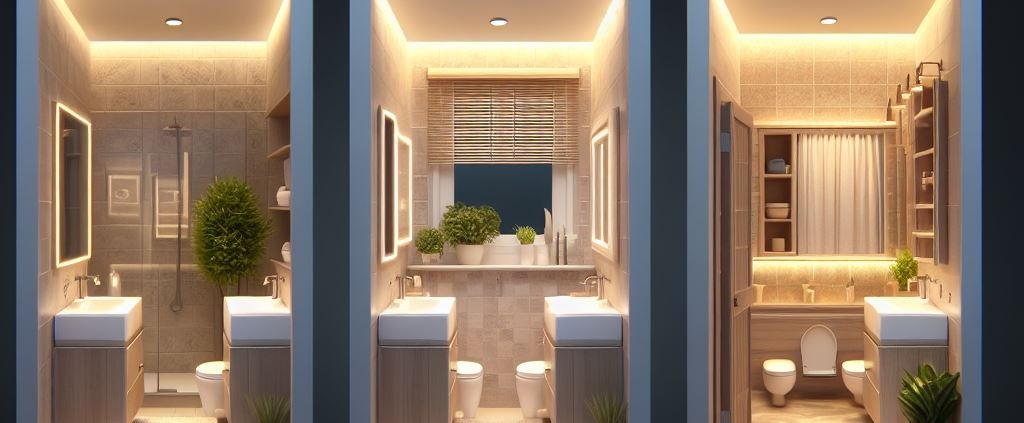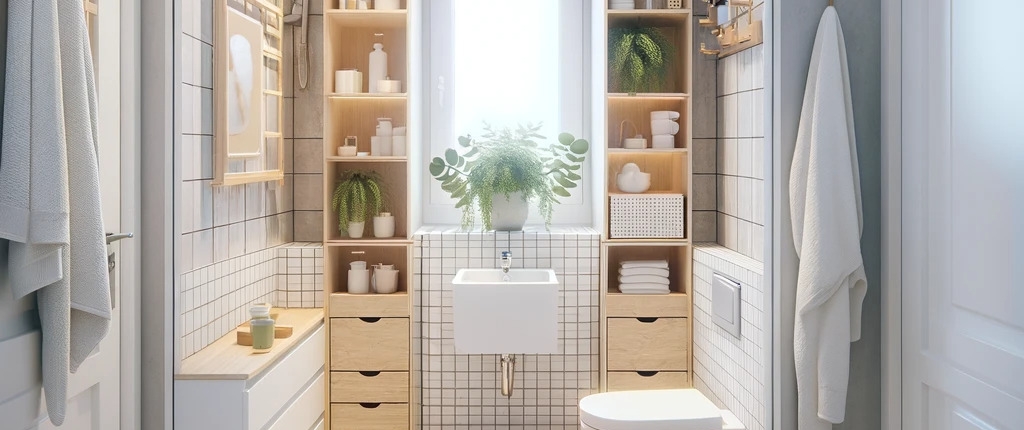Small Bathroom Renovation Ideas That Maximize Space & Style
Renovating a small bathroom might feel like a challenge—but it’s also a huge opportunity. When space is limited, smart choices matter more. The right layout, lighting, and materials can make even the tiniest bath feel modern, open, and functional.
Whether you’re working with a narrow powder room or a full bathroom that needs serious space-saving, here are original, practical tips that deliver real impact without a full gut job.
Top 5 Space-Saving Design Upgrades
- Wall-Mounted Fixtures: Floating vanities and wall-hung toilets free up precious floor space and visually “lift” the room.
- Sliding or Pocket Doors: Traditional swing doors eat up space. A pocket door can give you back 9–12 square feet—game-changing in a small bathroom.
- Mirrored Walls or Cabinets: A full-length mirror or mirrored cabinet does double duty by expanding light and reflecting depth.
- Corner Sinks or Showers: Corners are often wasted. Installing a corner basin or triangular shower keeps the room flowing.
- Large-Format or Light-Colored Tile: Big tiles make rooms feel bigger—especially when they run vertically and wall-to-wall. Light colors reflect more light and feel more open.
Smart Storage Without Bulk
Storage is tricky in a small bathroom, but it’s far from impossible. Try built-in niches between studs, shallow recessed shelving, or vertical cabinets above the toilet. Open shelving with baskets can look clean while still being practical. And don’t forget: hooks beat towel bars in tight layouts.

What to Avoid in Small Bathroom Renovations
- Oversized vanities: These kill movement space. Instead, look for narrow or floating alternatives.
- Dark paint or tile from floor to ceiling: Use dark tones as accents, not the main act. They can shrink the room visually.
- Cluttered decor: Too many details make small spaces feel chaotic. Choose clean lines and a simple material palette.
Budgeting a Small Bathroom Reno (With Big Impact)
Small bathrooms can cost less to renovate—but only if you plan strategically. Labor often makes up 40–60% of your budget, so saving comes from minimizing layout changes or doing some of the finish work yourself. For a breakdown of typical expenses, check out our bathroom renovation cost guide.
Some small bathrooms benefit more from a refresh than a full remodel. Swapping out fixtures, tile, and paint can completely change the vibe—without touching plumbing or electrical.
DIY or Hire a Pro?
If you’re handy, a small bathroom can be a great DIY project—especially if you’re not moving plumbing. Painting, tiling, and installing a vanity or toilet are doable with the right prep and tools. We’ve shared tips for weekend warriors in our DIY bathroom renovation guide.
For anything involving waterproofing, venting, or rerouting pipes, we always recommend bringing in a pro. Mistakes in small bathrooms can be just as costly—and damaging—as in large ones.
Small Bathroom Ideas That Actually Work
- Glass Shower Walls: These open up sightlines and make the whole room feel airier.
- Wall-to-Wall Floating Shelves: Minimal, modern, and great for open storage or folded towels.
- Backlit Mirrors: Save wall space and add beautiful, even lighting without clutter.
- Neutral Palette + a Bold Accent: Keep the space open and clean, but add a punch with a patterned tile niche or painted ceiling.
- Compact Fixtures: Many manufacturers make “urban-sized” toilets and sinks with smaller footprints—perfect for condo bathrooms or tight layouts.
Before You Start: Think Flow, Not Just Finish
Renovating a small bathroom isn’t just about style—it’s about how the space works. Think through your daily routine. Where will things go? How will drawers open? Does the door block the towel hook? These small details are what turn a good reno into a great one.
Next Steps
Ready to start planning? Explore our renovation ideas for more layout and material inspiration, compare costs with our budget breakdown, or dive into our DIY guide for hands-on tips.



